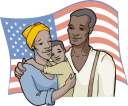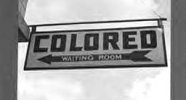
Worksheets and No Prep Teaching Resources
Reading Comprehension Worksheets
Black History and Blacks in U.S. History

Black History and Blacks in U.S. History
 Worksheets and No Prep Teaching Resources Reading Comprehension Worksheets Black History and Blacks in U.S. History |
 Black History and Blacks in U.S. History |
| edHelper's suggested reading level: | grades 4 to 6 | |
| Flesch-Kincaid grade level: | 6.89 |
|
Jim Crow Laws
By Jane Runyon |

|
 1 Many people believed that the end of the Civil War would bring great changes to the lives of slaves in the South. They were given freedom from slavery by the President of the United States. They were declared to be citizens of the United States. As citizens, they were guaranteed certain rights by the Constitution. All should have been well. But it wasn't.
1 Many people believed that the end of the Civil War would bring great changes to the lives of slaves in the South. They were given freedom from slavery by the President of the United States. They were declared to be citizens of the United States. As citizens, they were guaranteed certain rights by the Constitution. All should have been well. But it wasn't. |
Create Weekly Reading Books
Prepare for an entire week at once! |
| Leave your feedback on Jim Crow Laws (use this link if you found an error in the story) |
 |
Black History and Blacks in U.S. History
|
 |
United States
|
|
|
 | Fifty States Theme Unit |
 |
Document Based Activities |